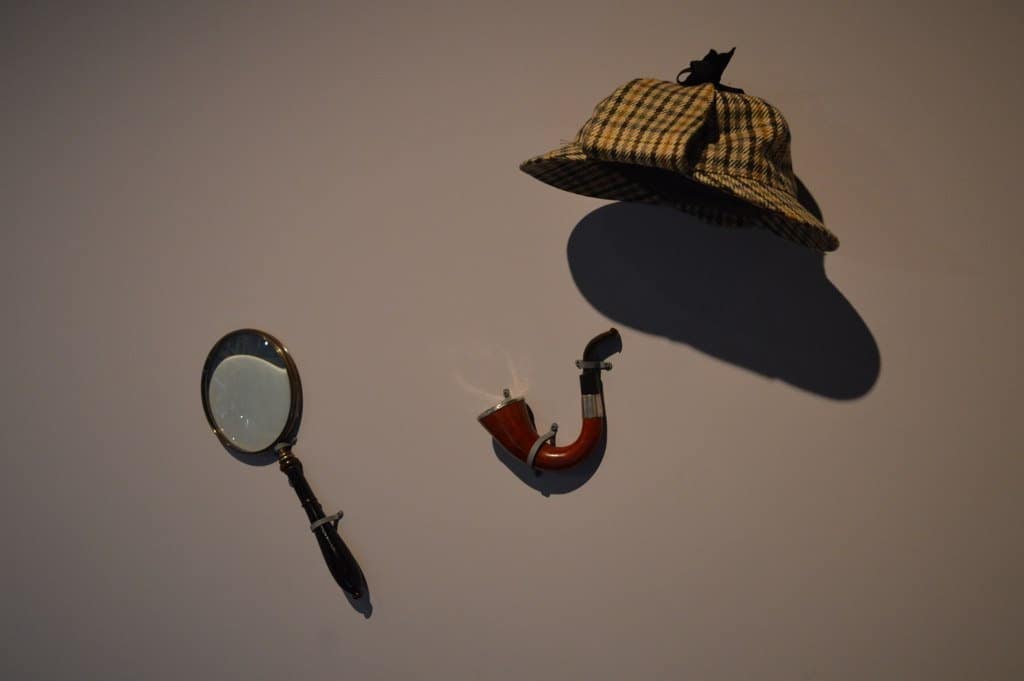
Q&A: HAYSTACKID Managing Director Larry Lieb Discusses the Art of Custodianship – Pt. 1

The evolution of technology and rapid transition away from paper-based records management to digital systems have had profound impacts on evidence custodianship. From individual employees acting as custodians of devices and custodial interviews conducted during collections, to the preservation of files and beyond, the game has changed immensely in the past 10 years.
Larry Lieb, CCPA, COSFE, CBE, LCE, FEXE, is currently a Managing Director at HAYSTACKID, and has about two decades of experience working with evidence. When he began his career roughly 20 years ago, paper-based discovery was still king. Through his continued work with custodianship and collections since the late 1990s, he has garnered a unique and invaluable perspective on these matters.
We recently sat down with Larry to hear some of his insights on the Art of Custodianship. In this first segment of a two-part Q&A, he gives us some background into the general concepts and subject matter involved in today’s custodian-related matters, how smartphones have impacted the procedures involved, and what HAYSTACKID is doing to optimize the process.
HAYSTACKID: Good morning Larry, thank you for taking the time to speak with us today.
Larry: Good morning, and it’s my pleasure.
Why don’t you begin by telling me what the Art of Custodianship is, in your own words?
Basically, the primary objective is to identify and preserve all physical sources of evidence potentially relevant to an underlying dispute.
Would this process begin with a collection?
No, it actually begins before that. It’s the measure twice cut once theory, meaning we typically get our best results by starting interviews with IT custodians to understand, for example, document retention policies and where critical electronic evidence could reside, such as email servers, archiving systems, the cloud, on smartphones, and the general architecture involved in their preservation frameworks.
Then, once we understand the architecture of the company’s electronic data storage and use, we map it out, and record those interviews. This becomes the genesis of our evidence map, and then we’ll typically interview the individual custodians, like John Jones VP of Sales, Sally Smith VP of Operations, and record the interviews of those folks to identify further physical sources of potentially relevant evidence, such as an email archive that Sally had created on a DVD.
Before diving deeper into the nitty-gritty of the Art of Custodianship, how about you tell me a little bit about your background in this arena. When did you begin to work with evidence maps?
I’ve been leveraging this particular evidence mapping technique for about 10 or 12 years.
Can you explain some of the differences between when you started and where you’re at now in terms of how the job has evolved?
Definitely. The No. 1 difference, and threat for that matter, is the explosion of the types of evidence sources, such as smartphones. These devices are a great example of the changes taking shape, notably because of their capacity – they’re basically computers with huge storage capacity right in our pockets. The cloud would be another major matter involved, as many clients are moving to the cloud.
This presents unique security, preservation, and custodial issues that will only to continue to become more complex.

Photo courtesy of Arctic Wolves
When you began using this technique, 10-12 years ago, was it more paper-based at that point?
Maybe not 10 years ago, but when I started my career in 1998, it was primarily all paper discovery. I did my first electronic discovery project around 2001, it was part of a Microsoft antitrust case.
Did you find that those the types of data and sources were easier to handle at that point than what you’re looking at today?
Absolutely, there were far fewer sources. Paper records, maybe email, office files – it was small. Now, the challenge is, I’ll pick up a smartphone from a client and it’ll have 22,000 text messages, some of which are usually privileged communications with their attorneys, some of which are relevant and responsive communications with their now opponent, and more.
This presents obvious challenges compared to fewer sources and much less data, especially in terms of custodial matters, collections, and preservation practices.
In the past five years, let’s say, what types of changes have you seen in these procedures?
Are you talking about custodial interviews and data mapping?
Yes.
Well, my evidence map that we use here, it continuously evolves. When new sources of evidence and new types of evidence proliferate, appearing with all of their different parameters, we have to get more sophisticated in how we’re tracking it and what we’re asking for.
So, if you think back through the past 10 years, you have the introduction of the first iPhone, the explosion of data volumes thanks to the cloud and move toward paperless business, smart technology’s rise to fame, and much, much more.
Every time one of these trends sprouts up, or a new technology comes onto the market, we have to adjust our evidence map and the procedures involved in architecting that map. Suffice it to say these adjustments and transformations have been ongoing for more than a decade now. And while there are plenty other devices popping up now, the smartphone really represents the greatest and most rapidly transforming source of evidence today.
So these trends and progressions are causing unique custodial challenges?
Yes, exactly. I will say that the real challenge is finding a unified platform to review all of this evidence in. So, the attorneys want to be able to go to trial and present an exhibit that includes a fact timeline such as: “At 9 a.m. a phone call was made with the opponent to set up a meeting, then at 10 a.m. text messages were sent back and forth using WhatsApp, later in the day there was a corporate email on the subject of a contract that is now under dispute, and then in the evening someone made phone calls to a financial institution.”
Being able to create a fact timeline which incorporates all the different new types of human activities, such as Facebook Messenger, email, and the like, is the challenge. I mean, think about your smartphone only five years ago – how many different forms of communication were you using on that device?
Probably not many, maybe just SMS texts and email. Now, though, you have a proverbial universe of text messaging-like services, in-app collaboration tools, and much more. As such, creating that fact timeline and finding a unified platform to centralize all of the evidence review can be a major challenge.

Photo courtesy of Siri Hardeland
Is there no unified platform that could handle that right now?
Well there is, and it’s our proprietary Cellebrite Integrator.
Cellebrite is the software that is specifically focused on cellphones, correct?
Yes.
Why don’t you take me through some of the ways in which Integrator ties into custodial interviews, mapping, and relevant procedures.
Once we’ve interviewed a custodian and they tell us, for example, they did have text message correspondence with the opponent regarding the dispute, then it’s important to preserve those smartphones and provide it to the attorneys for production if appropriate. Cellebrite allows us to connect the dots between the information we receive from the custodial interviews to the actual data and metadata on the device.
Think of Cellebrite as a forensic extraction and imaging tool that is built specifically for cellphones. Now, we here at HAYSTACKID did create a tool to enhance the functionality of Cellebrite, especially in terms of review.
Can you explain what an attorney might experience when using Cellebrite without Integrator?
Cellebrite only allows for a review of the smartphone evidence by one person at a time, and that can be sufficient for small cases. However, for larger, more significant matters, our clients want the ability to have multiple attorneys reviewing materials at the same time, and sometimes from different locations.
They want more eyes on, for example, the 60,000 text messages that a client has provided them to get down to relevant evidence quickly, cost-effectively, and with strong completeness. Because cellphones are becoming so much more pertinent to a wider range and higher volume of cases, it was clear that we needed to create a tool to enable multiple, simultaneous attorney reviews through Cellebrite, and that is how Integrator came to be.
Then the biggest advantage of Integrator is opening up the review to a multitude of attorneys?
That’s right – you can have concurrent reviewers. That’s the beauty of our solution, it’s the ability for our clients to communicate and perform reviews together right in Relativity with Cellebrite Integrator, and we’re the only group that offers this. We have had very positive reviews of it thus far, and continue to innovate on top of our original tool as work necessitates newer, more advanced features and functions.
Check back soon for Pt. 2 of our Q&A with Larry Lieb on the Art of Custodianship, in which he discusses some of the unique ways HAYSTACKID handles these matters, as well as impending trends pertinent to attorneys and corporations.
